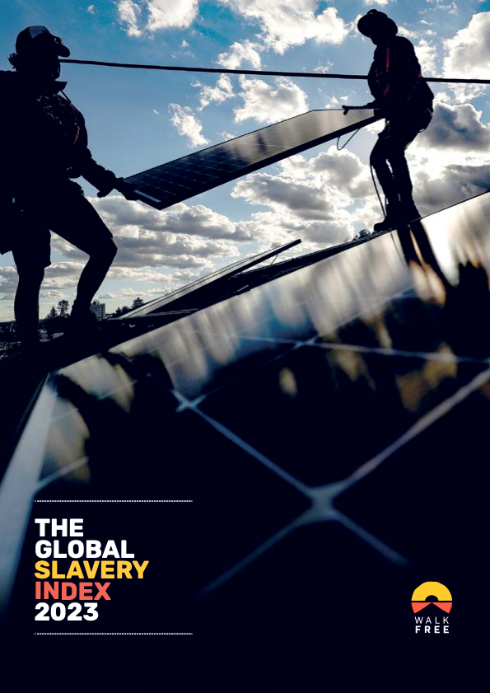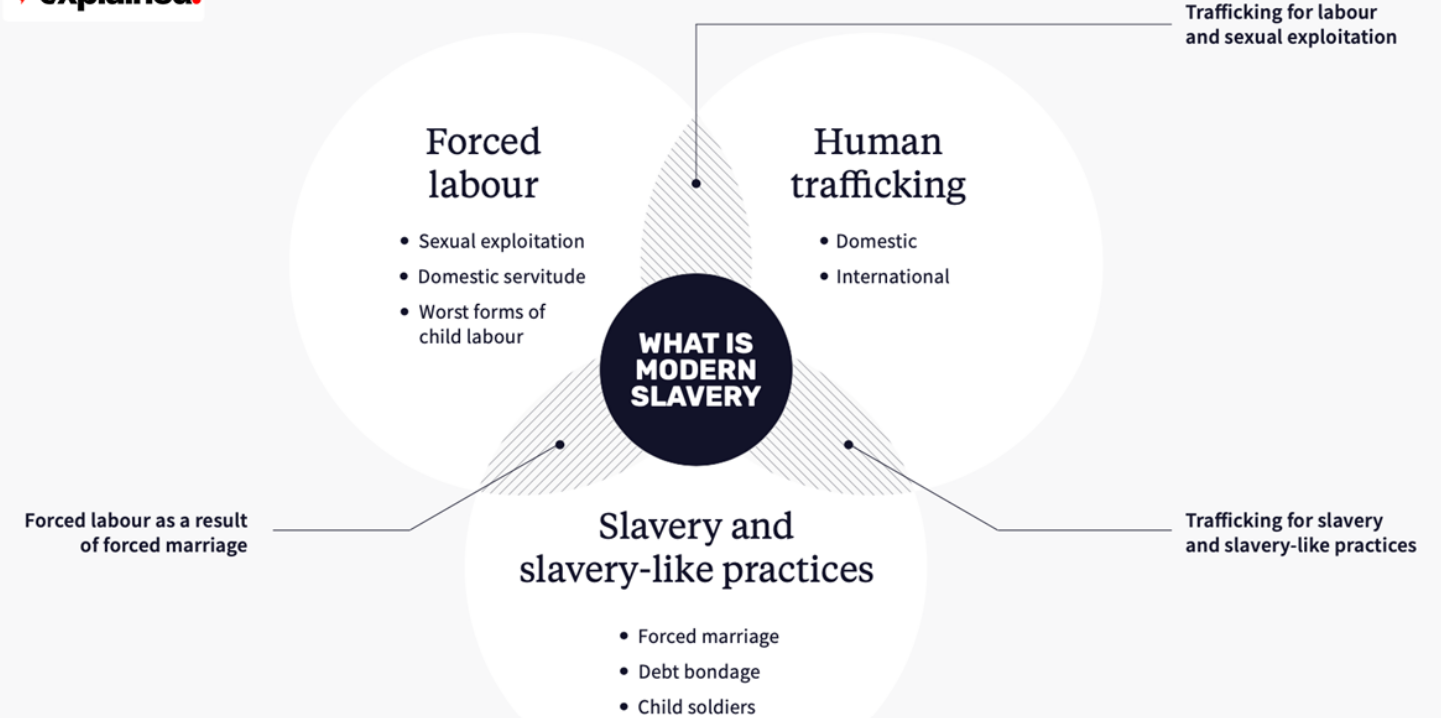Description

Disclaimer: Copyright infringement not intended.
Context
- Recently, the 5TH Edition of Global Slavery Index (GSI)2023 was released.
Global Slavery Index
About
- The Global Slavery Indexis a study of modern slavery.
Publishing Body
- GSI is published by Walkfree Group of Mindaroo’s Foundation.
- Walk Free is a human rights organization. Also, it is based on data provided by the Global Estimates of Modern Slavery, which, in turn, is produced by the International Labour Organisation (ILO), Walk Free, and the International Organisation for Migration (IOM).
Editions
- This is the fifth edition of the GSI and it is based on the 2022 estimates.
- The previous four editions were published in 2013, 2014, 2016, and 2018.
Definition of Modern Slavery according to GSI
- According to the Global Slavery Index, “modern slavery” refers to situations of exploitation that a person cannot refuse or leave because of threats, violence, coercion, deception, or abuses of power. Modern slavery is an umbrella term and includes a whole variety of abuses such as forced labour, forced marriage, debt bondage, sexual exploitation, human trafficking, slavery-like practices, forced or servile marriage, and the sale and exploitation of children.
- The schematic provides a broad framework of what all modern slavery covers.

SDG on Modern Slavery
- The Sustainable Development Goals (SDGs) of the United Nations also resolve to end modern slavery.
- Target 8.7 of the SDGs states:
“Take immediate and effective measures to eradicate forced labour, end modern slavery and human trafficking and secure the prohibition and elimination of the worst forms of child labour, including recruitment and use of child soldiers, and by 2025 end child labour in all its forms.”
Findings of 2023 Edition
- In its report, Walk Free reported that 6 million people are living in modern slavery, out of which, India is home to 11 million.
- The organization, Walk Free, says that
"Modern slavery is hidden in plain sight and is deeply intertwined with life in every corner of the world".
- An estimated 50 million people were living in modern slavery on any given day in 2021, an increase of 10 million people since 2016, according to Walk Free. Among these 50 million (of which 12 million are children), 28 million suffer from forced labour and 22 million from forced marriages
.jpeg)
Country-wise findings
- There are three sets of key findings.
- The first looks at the prevalence of modern slavery. The prevalence refers to the incidence of modern slavery per 1000 population. On this count, the following 10 countries are the worst offenders:
- North Korea
- Eritrea
- Mauritania
- Saudi Arabia
- Turkey
- Tajikistan
- United Arab Emirates
- Russia
- Afghanistan
- Kuwait
- These countries share some political, social, and economic characteristics, including limited protections for civil liberties and human rights,” states the index.
Following are the countries with the lowest prevalence:
- Switzerland
- Norway
- Germany
- Netherlands
- Sweden
- Denmark
- Belgium
- Ireland
- Japan
- Finland
However, apart from prevalence, the index also calculates the countries hosting the maximum number of people living in modern slavery. Here the list is as follows:
- India
- China
- North Korea
- Pakistan
- Russia
- Indonesia
- Nigeria
- Turkey
- Bangladesh
- United States
- Collectively, these countries account for nearly two in every three people living in modern slavery and over half the world’s population. Notably, six are G20 nations: India, China, Russia, Indonesia, Türkiye, and the US,” points out the index.
Criticism of GSI
- The index has come in for sharp criticism from those in civil society that work on issues such as human trafficking.
- Global Alliance Against Traffic in Women (GAATW), Thailand, said that while authors of the index “clearly have very good intentions”, they end up “depoliticising the problems and distracting us from the real problems.”
- A universal, reliable calculation of modern slavery isn’t possible because modern slavery has no internationally agreed definition. “‘Modern slavery’ is a made-up concept with no international legal definition and, in fact, the definition used in this index has changed from year to year,” she said.
- Some of the “statistics” in the index contradict the qualitative analysis contained within the body of the report.
- For example, the index displays the UK as having the “strongest government response to modern slavery.” Yet buried further down at page 28 is the finding that “the UK’s overall response to slavery has declined since 2018... there has been a worsening of measures on victim protection and access to visas...
- A proposed Illegal Migration Bill introduced in March 2023 is a potential violation of international law and the UN Refugee Convention and it shows that the UK is at risk of continuing its downward trend.”
- Ranking countries in this way is stigmatising poorer countries and absolving richer countries of their responsibility for issues like trafficking in persons.
|
PRACTICE QUESTION
Q. Consider the following statements.
a) The Global Slavery Index is published by International Labour Organization.
b) Target 8.7 of the Sustainable Development Goals (SDGs) states: Take immediate and effective measures to eradicate forced labour, end modern slavery and human trafficking and secure the prohibition and elimination of the worst forms of child labour, including recruitment and use of child soldiers, and by 2025 end child labour in all its forms.”
Which of the statements given above is/are correct?
1) Only a
2) Only b
3) Both a and b
4) Neither a nor b
Correct Answer: 2) Only b
|

https://indianexpress.com/article/explained/explained-economics/global-slavery-index-2023-india-rank-explained-8659738/














